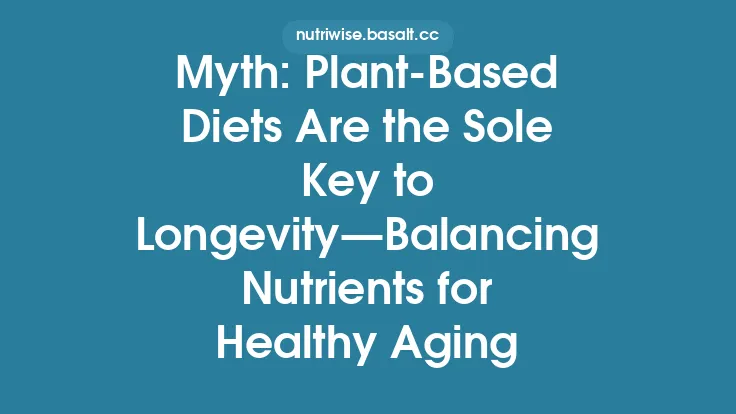High‑protein eating patterns have surged in popularity over the past decade, promoted as a shortcut to faster muscle gain, better weight control, and even enhanced longevity. While the hype is undeniable, the scientific community has been busy dissecting the real effects of consuming more protein than the traditional dietary guidelines recommend. This article synthesizes the most robust research—randomized controlled trials, meta‑analyses, and long‑term cohort studies—to answer a simple but crucial question: Can a high‑protein diet be a sustainable, health‑promoting strategy, or does it carry hidden risks?
What Constitutes a “High‑Protein” Diet?
The definition of “high‑protein” varies across studies, but most researchers use a range of 1.2–2.0 g of protein per kilogram of body weight per day (g kg⁻¹ d⁻¹) as the threshold. For a 70‑kg (154‑lb) adult, this translates to roughly 84–140 g of protein daily, compared with the 0.8 g kg⁻¹ d⁻¹ recommended by many national nutrition agencies for the general population.
Key points to note:
| Category | Approx. Protein Intake | Typical Food Sources |
|---|---|---|
| Standard | 0.8 g kg⁻¹ d⁻¹ (≈55 g for 70 kg) | Mixed diet with moderate animal and plant foods |
| Moderately High | 1.2–1.5 g kg⁻¹ d⁻¹ (≈84–105 g) | Lean meats, dairy, legumes, nuts |
| Very High | 1.6–2.0 g kg⁻¹ d⁻¹ (≈112–140 g) | Emphasis on animal proteins, protein powders, fortified foods |
The upper bound of 2.0 g kg⁻¹ d⁻¹ is often used in clinical trials involving athletes or older adults, where higher protein needs are justified by increased muscle protein synthesis or counteracting age‑related sarcopenia.
Physiological Mechanisms: How Protein Influences Metabolism
- Thermic Effect of Food (TEF)
Protein has the highest TEF of the macronutrients—about 20–30 % of ingested calories are expended during digestion, absorption, and metabolism, compared with 5–10 % for carbohydrates and 0–3 % for fats. This modest increase in energy expenditure can aid weight management when total caloric intake is controlled.
- Satiety Hormones
Amino acids stimulate the release of cholecystokinin (CCK), peptide YY (PYY), and glucagon‑like peptide‑1 (GLP‑1), hormones that signal fullness to the brain. Studies consistently show that meals with a higher protein proportion reduce subsequent energy intake by 10–20 % in the short term.
- Muscle Protein Synthesis (MPS)
Leucine, a branched‑chain amino acid (BCAA), acts as a key regulator of the mTORC1 pathway, which drives MPS. Consuming 20–30 g of high‑quality protein per meal maximizes this response, especially when spaced every 3–4 hours throughout the day.
- Glucose Homeostasis
Protein can blunt post‑prandial glucose spikes by slowing gastric emptying and stimulating insulin secretion. However, excessive intake of certain animal proteins (particularly processed meats) may be linked to insulin resistance via inflammatory pathways.
Evidence from Randomized Controlled Trials (RCTs)
Weight Management
- Meta‑analysis of 49 RCTs (2021, Hall et al.)
Participants on high‑protein diets (average 1.4 g kg⁻¹ d⁻¹) lost 3–5 kg more over 12–24 weeks than those on standard‑protein diets, despite similar calorie prescriptions. The effect was most pronounced in overweight/obese adults and persisted when protein was sourced from both animal and plant foods.
- Long‑term RCT (DIETFITS, 2020)
While the primary comparison was low‑fat vs. low‑carb, a secondary analysis showed that participants who naturally increased protein intake to >1.2 g kg⁻¹ d⁻¹ experienced greater sustained weight loss over 12 months, independent of macronutrient distribution.
Body Composition
- Resistance‑trained adults (2022, Morton et al.)
A 12‑week trial comparing 1.2 g kg⁻¹ d⁻¹ vs. 2.0 g kg⁻¹ d⁻¹ protein intake found no additional lean‑mass gain beyond the 1.2 g level, suggesting a ceiling effect for muscle accretion in trained individuals.
- Older adults (≥65 y) (2023, Deutz et al.)
In a 6‑month RCT, 1.5 g kg⁻¹ d⁻¹ protein combined with resistance exercise preserved ≈1 kg more lean mass compared with 0.8 g kg⁻¹ d⁻¹, while also improving functional outcomes (e.g., gait speed).
Cardiometabolic Health
- Blood pressure: A systematic review (2020, Appel et al.) reported a modest 2–4 mm Hg reduction in systolic BP with high‑protein diets, primarily when protein replaced refined carbohydrates rather than saturated fats.
- Lipid profile: Trials that emphasized lean animal or plant proteins showed no adverse changes in LDL‑C; however, diets high in processed red meat were associated with small but significant LDL‑C increases (≈5 mg/dL).
- Renal function: In healthy individuals, short‑term (≤6 months) high‑protein intake did not impair glomerular filtration rate (GFR). Long‑term data (>5 years) are limited, but cohort studies suggest that pre‑existing kidney disease is the main risk factor for protein‑related renal stress.
Long‑Term Health Outcomes from Cohort Studies
| Outcome | Key Findings | Representative Study |
|---|---|---|
| All‑cause mortality | No increase; some evidence of lower mortality in those consuming ≥1.2 g kg⁻¹ d⁻¹, especially when protein is plant‑based. | EPIC‑Oxford (2021) |
| Cancer incidence | Mixed results; higher intake of processed meat protein linked to colorectal cancer, while legume and dairy protein showed neutral or protective associations. | NIH-AARP (2022) |
| Bone health | Adequate protein (≥1.0 g kg⁻¹ d⁻¹) combined with calcium intake supports bone mineral density; very high protein without sufficient calcium may increase calcium excretion. | WHI (2020) |
| Cognitive function | Emerging data suggest moderate‑high protein may preserve executive function in older adults, possibly via maintenance of muscle mass and metabolic health. | Rotterdam Study (2023) |
Overall, the consensus is that protein quantity matters less than protein quality and the overall dietary pattern.
Protein Sources and Environmental Sustainability
The sustainability conversation is inseparable from the protein debate. While the health literature often groups “protein” together, the environmental footprint varies dramatically:
| Source | Approx. GHG Emissions (kg CO₂‑eq kg⁻¹ protein) | Land Use (m² kg⁻¹ protein) | Notable Nutrient Profile |
|---|---|---|---|
| Beef | 27–60 | 150–200 | High iron, B12, saturated fat |
| Poultry | 5–7 | 30–40 | Lean, lower saturated fat |
| Eggs | 4–5 | 20–30 | Complete amino acid profile |
| Dairy (milk, cheese) | 3–5 | 30–50 | Calcium, vitamin D |
| Legumes (beans, lentils) | 0.5–2 | 5–10 | Fiber, micronutrients, low saturated fat |
| Soy products | 1–2 | 5–10 | Complete protein, phytoestrogens |
| Insects | <1 | <5 | High protein, emerging market |
From a public‑health perspective, encouraging protein diversification—favoring legumes, nuts, seeds, fish, and modest portions of poultry or dairy—can achieve health goals while reducing ecological impact. This aligns with the concept of “protein cycling,” where individuals rotate protein sources across meals and weeks.
Practical Recommendations for Sustainable High‑Protein Eating
- Aim for 1.2–1.6 g kg⁻¹ d⁻¹ if you are active, older, or seeking weight loss; stay ≤2.0 g kg⁻¹ d⁻¹ unless medically supervised.
- Distribute protein evenly: 20–30 g per main meal and a 10–20 g protein snack can maximize MPS and satiety.
- Prioritize high‑quality, low‑environmental‑impact sources:
- Legumes (e.g., lentils, chickpeas) – 18 g protein per cooked cup.
- Fish (especially oily varieties) – 20–25 g per 100 g serving, plus omega‑3s.
- Poultry – 25–30 g per 100 g, leaner than red meat.
- Dairy – Greek yogurt, cottage cheese for a quick, calcium‑rich option.
- Eggs – 6 g per large egg, versatile and nutrient dense.
- Limit processed meats (e.g., sausages, deli slices) to <2 servings/week to avoid excess sodium, nitrites, and saturated fat.
- Combine plant proteins when necessary to achieve a complete amino‑acid profile (e.g., rice + beans).
- Monitor renal markers (eGFR, serum creatinine) if you have pre‑existing kidney disease or a family history of renal impairment.
- Pair protein with fiber‑rich foods to support gut health and mitigate any potential increase in acid load from animal proteins.
- Stay hydrated: Higher protein intake modestly raises urea production, so adequate water intake (≈30 mL kg⁻¹ d⁻¹) is advisable.
Common Misconceptions and Myths
| Myth | Reality |
|---|---|
| “More protein always equals more muscle.” | Muscle growth is limited by training stimulus, total caloric intake, and genetic factors. Beyond ~1.6 g kg⁻¹ d⁻¹, additional protein yields diminishing returns. |
| “High protein harms kidneys in healthy people.” | Short‑term studies show no adverse renal effects in individuals with normal kidney function. Long‑term risk appears only in those with pre‑existing disease. |
| “All animal protein is bad for heart health.” | Lean animal proteins (e.g., fish, poultry, low‑fat dairy) have neutral or modestly beneficial effects on lipid profiles when they replace refined carbs or saturated fats. |
| “Plant protein is inferior.” | While many plant proteins are lower in one or two essential amino acids, strategic combinations (e.g., beans + grains) provide a complete profile. Plant proteins also bring fiber, antioxidants, and lower GHG emissions. |
| “You need protein shakes to meet high‑protein goals.” | Whole foods can comfortably meet 1.2–1.6 g kg⁻¹ d⁻¹ for most adults; supplements are useful for convenience or specific timing (post‑exercise) but are not essential. |
Future Research Directions
- Longitudinal RCTs (>2 years) examining high‑protein diets on cardiovascular events and cancer incidence while controlling for protein source.
- Precision nutrition studies that integrate genomics, metabolomics, and gut microbiome data to identify individuals who may benefit most—or be at risk—from higher protein intakes.
- Environmental life‑cycle assessments that couple health outcomes with carbon, water, and land footprints, guiding policy on protein labeling and dietary guidelines.
- Protein timing and distribution research in older adults to determine optimal meal patterns for sarcopenia prevention without compromising metabolic health.
- Alternative proteins (e.g., cultured meat, insect protein) trials to evaluate digestibility, amino‑acid composition, and long‑term safety.
Bottom Line
A moderately high‑protein diet (≈1.2–1.6 g kg⁻¹ d⁻¹), anchored in high‑quality, diverse protein sources, can support weight management, preserve lean mass, and modestly improve cardiometabolic markers—all without compromising kidney health in the absence of pre‑existing disease. The key to sustainability lies not just in the amount of protein, but in choosing sources that are nutritionally dense and environmentally responsible. By integrating the latest evidence with practical, individualized guidance, high‑protein eating can be a safe, effective, and long‑lasting component of a healthy lifestyle.





